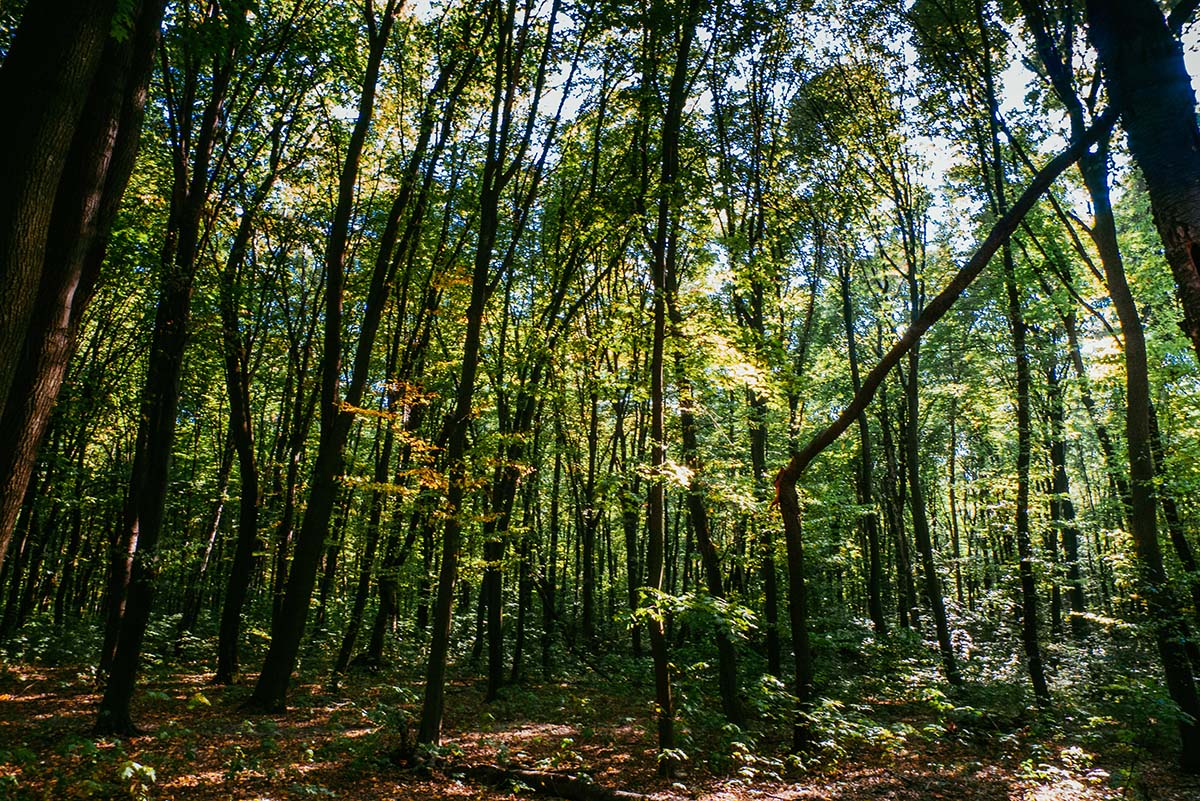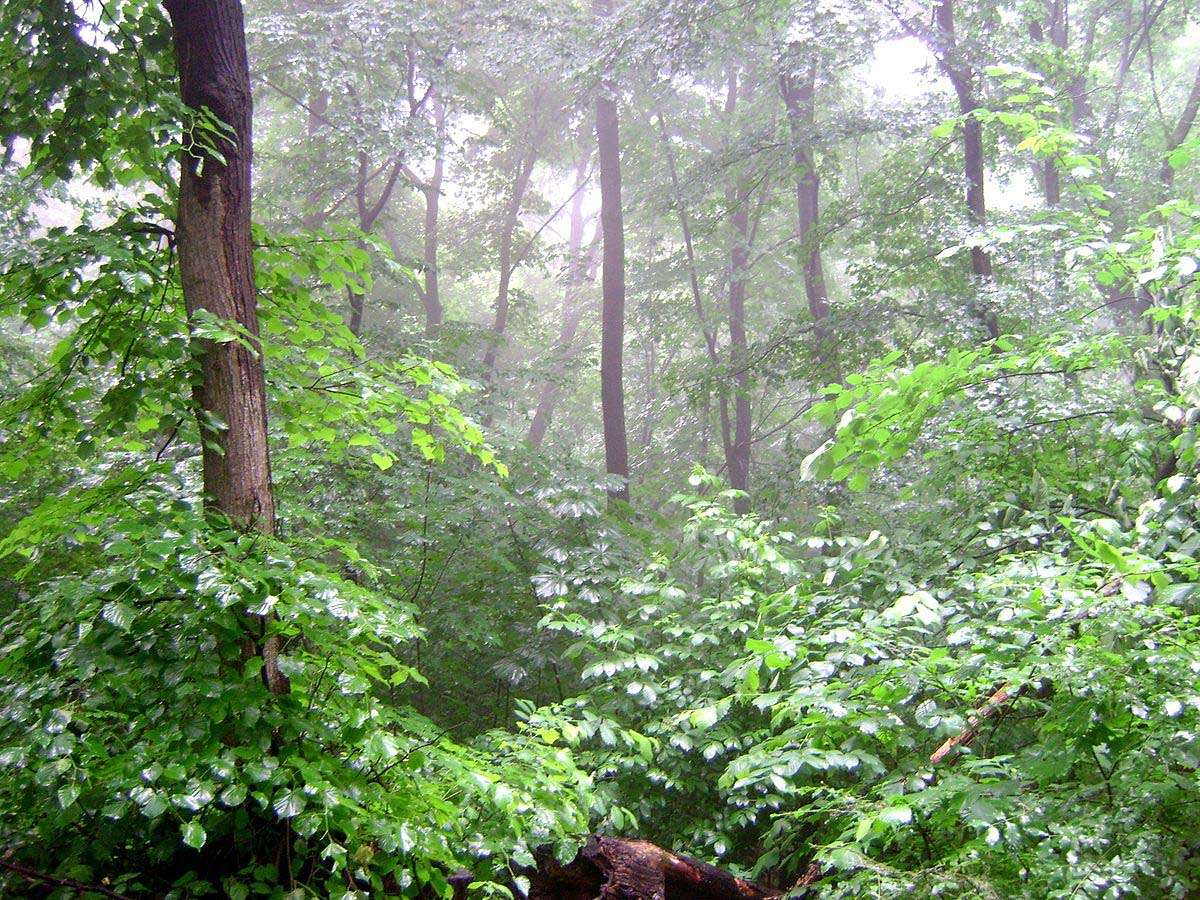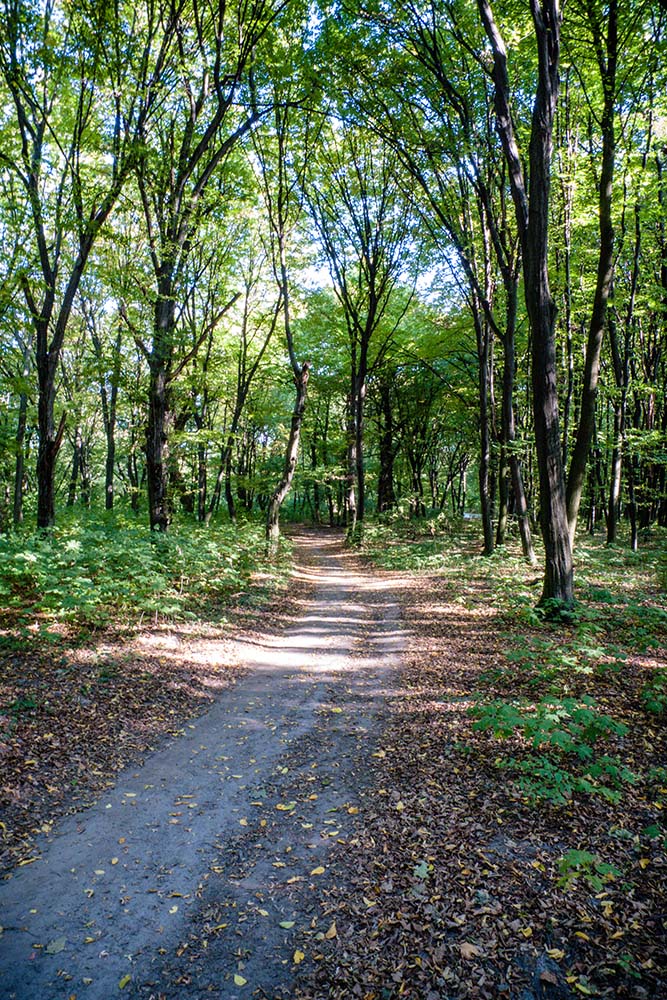The relief of the Goloseevsky National Natural Park, which was officially created in 2007, is represented by the Lysogorsko-Korchevatsky and Pirogovsky uplifts (185-190 meters high), the Kiev forest plateau, the first above-floodplain terrace of the Dnieper, the floodplains of the Dnieper and Vita rivers. In the Goloseevsky forest and Park named after Maxim Rylsky the Orekhovatsky, Didorovsky and Kitaevsky streams flow in the valleys with systems ponds (Orekhovatskie, Didorovskie, Kitaevskie), the area of the Lesniki reserve is dissected by numerous branches of the Vita River.
Goloseevsky Park is incredibly large (more than 11,000 hectares) and is represented by separate sections. The northern part in the Goloseevsky district (Goloseevsky forest and Rylsky Park) is limited by Goloseevsky Avenue, Stolichny Highway and Academician Zabolotnogo Street, the southern part (Lesniki and Koncha-Zaspa tract) is limited by Stolichny and Dnepropetrovsk highways and the administrative border of Kiev. The Belichansky forest occupies the western part of the Svyatoshinsky district (and Podolsky district), with the exception of existing environmental protection sites.
Goloseevsky National Natural Park consists of the following objectsː
1. Park-monument of landscape gardening art Goloseevsky Forest
2. Sanctuary Urochishche Lesniki
3. Park-monument of landscape art Park named after Maxim Rylsky
4. Slope near the Institute of Physics
5. Botanical Garden of the National University of Bioresources and Nature Management
6. Bychok tract
7. Koncha-Zaspa tract
8. Teremki tract
9. Belichansky forest
On the territory of Goloseevsky Park there are many archaeological monuments: a settlement of Old Russian times, the Kitaevskoye settlement and burial mound, a settlement of the Scythian period, the architectural complex of the Goloseevsky skete, a cemetery Goloseevskaya Hermitage with the grave of St. Alexei, the remains of the defense line (trenches) of Kiev, the cave complex in the Tserkovshchina “Anthony Caves”, the cave church of Theodosius of Pechersk and much more.
The park has forests of different composition – oak and hornbeam in the northern part and pine on the Dnieper terrace in the southern part, and also has a varied relief, watercourses, springs, and picturesque landscapes for the flat part of Ukraine. Thirteen 400-500 year old oak trees in Goloseevsky Park received the status of botanical natural monuments of local significance. The flora of the park includes 650 species of higher vascular plants, 118 species of bryophytes and more than 60 species of aphyllophoroid fungi. Some of these species have protected status at the international, state or regional level. For example, of vascular plants, 5 species are listed in Appendix I of the Berne Convention, 1 species is in the European Red List, 24 species are in the Red Book of Ukraine and 29 species are regionally rare. The fauna of the Goloseevsky National Natural Park is also very valuable and diverse: 31 species of terrestrial mollusks, 190 species of insects and 181 species of vertebrates (including bony fish – 21, amphibians – 10, reptiles – 6 species, birds – 100, mammals – 44 species).
Other interesting places are adjacent to the Goloseevsky National Natural Park: Feofaniya, Pirogovo, Kitaevo (Kitaevskaya desert) and VDNH.






